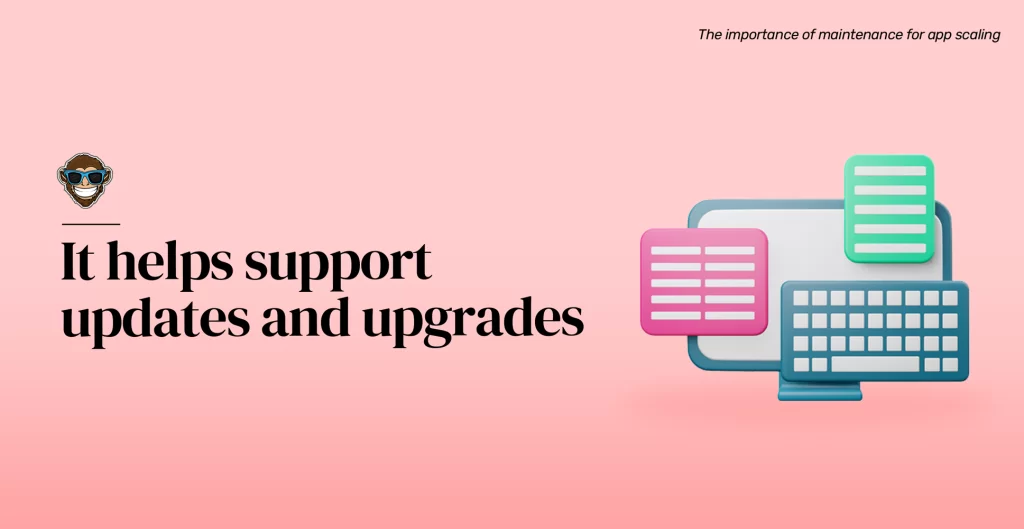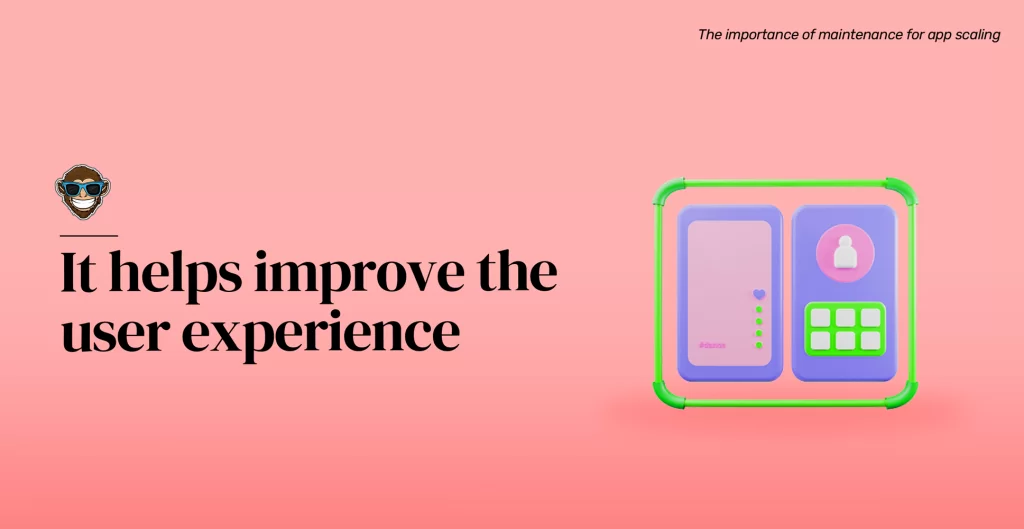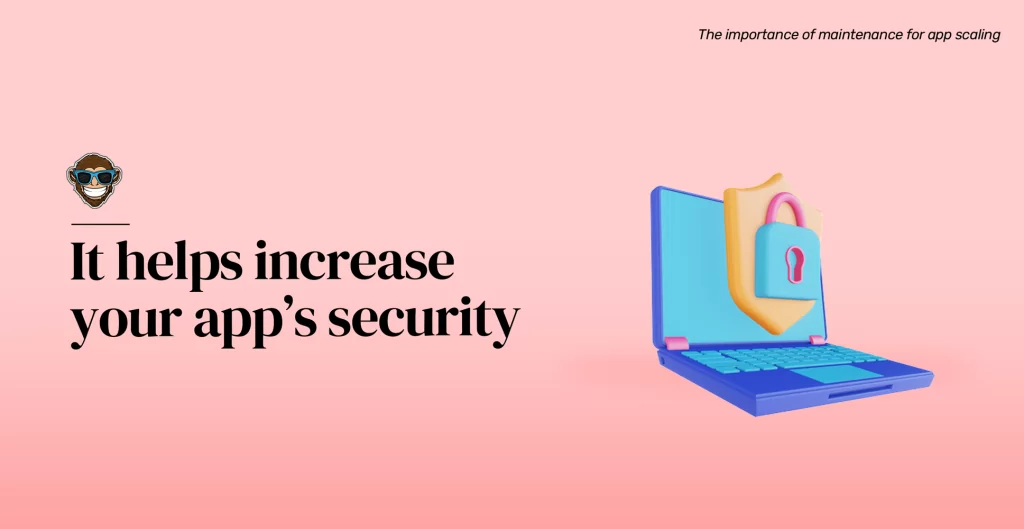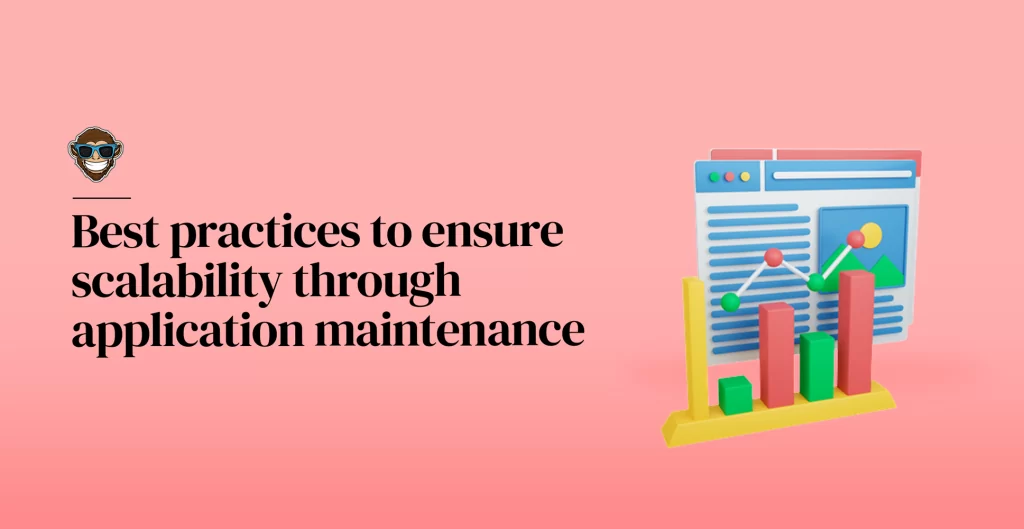The life of an app doesn’t begin at coding and end at deployment. Instead, application development is an ongoing process that starts with research and continues as long as the product’s lifecycle is active and in use. Hence, the importance of maintenance for scaling, supporting, and promoting durability in apps.
The mind-blowing pace at which technology is evolving, coupled with the pandemic, is upending individuals and businesses worldwide and driving us to adapt to the modern, digital way of living quickly. From shopping online to having virtual doctor consultations, we are now constantly leveraging web and mobile applications to drive our day-to-day and make business operations scale up faster than ever before. So, from transforming the online user experience and driving business innovation forward to creating new revenue avenues and broadening the reach of countless goods and services–IT-powered products are swiftly becoming game-changers for individuals and enterprises, both large and small, across the world. This phenomenon has undeniably made the app development industry more aware of the quality of the products we ship. But, more importantly, it has made us highly vigilant of our application maintenance practices.
As long as an IT-powered product is still active and your users still enjoy it, its development lifecycle is never truly finished. Your task as a development partner doesn’t stop, even more so in the ever-changing technological landscape where all software, web, and mobile applications require constant maintenance to remain relevant and competitive. Hence, the importance of having a wholesome application maintenance strategy. It’s the only way to make sure your app adapts to emerging technologies, its users’ needs, the markets’ requirements, and, more importantly, to grow and scale as trends and user demands evolve.
So, in this article, and based on our long-lasting experience with application maintenance, we will discuss its importance for apps and how maintenance can help enforce durability and scalability for all mobile and web products. Let’s see.

What is application maintenance?
Application maintenance is the act of continually updating, modifying, reassessing, optimizing, and fine-tuning an existing and already deployed application. In that sense, whenever you change or update any part of your application, you’re performing an act of maintenance. Most of these changes or updates should be inconspicuous to your users when done correctly. Most of these “changes” need to happen for many reasons. You may need to enhance some features, add new ones, update security protocols, migrate to the cloud, or simply keep it running smoothly. Whichever the case, it is a fundamental part of your app’s success. It is the heart of your product’s durability and, as such, needs to be enforced effectively and adequately. But, more importantly, app maintenance must be an ongoing task that lasts through your product’s entire life cycle and should take place as long as the app is live and in use. Doing so is the best, most foolproof way to ensure your products, whether web or mobile, are always running seamlessly, perform optimally, meet your users’ expectations, and remain scalable so that they can adapt to the always-changing landscape of the modern application universe.
Lucky for us, app maintenance is simple enough when approached accurately, and you can quickly develop a wholesome strategy to help your maintenance practices remain in line with your business needs. And to make things easier, there are different ways to approach app maintenance. Depending on the app type, you can use one, two, or all of them but how you make this decision largely depends on your research and your needs. So let’s take a look at the different categories of app maintenance.
Preventive application maintenance: Preventive maintenance’s primary goal is to thwart all possible bugs, errors, and crashes before they occur so that you can always be one step ahead of any failures that may come. One way to perform preventive maintenance is always to make sure your code is easily scalable and can adapt to changes and modifications without any issues. This way, you can future-proof your product to prevent its deterioration and lengthen its useful life span. Moreover, preventive maintenance includes all the testing strategies and QA implementations you employ before deployment and those you keep implementing afterward. It also requires you to monitor your app’s systems and your infrastructure continually (if any) to ensure its stability and scalability. Consequently, you shouldn’t only perform preventive measures once but rather all the time, even when there aren’t any evident failures, to ensure the seamlessness of its performance at all times.
Perfective application maintenance: Perfective maintenance focuses on addressing the features and requirements of the application to enhance its scalability and usability. It involves all maintenance actions that ensure the evolution of the product’s requirements and features to change how it works or looks to perfect it and improve the user experience. In that sense, when you tweak your app’s user interface, make redesigns, or add or delete features or functionality, you’re performing perfective maintenance. Since these changes impact the front end of your product, they are usually visible to the user and highly noticeable, which means you need to carry them out as seamlessly and efficiently as possible. Also, although necessary, taking perfective measures can directly impact user satisfaction, so using user feedback as a standing ground is crucial to ensure the elements you add are truly necessary while the ones you eliminate aren’t.
Corrective application maintenance: Corrective maintenance aims to repair or, as its name clearly conveys, perform corrective changes and modifications to fix bugs and errors in application performance. These fixes often come from feedback, user reports (which account for 44% of in-app defects found), or QA screening, all of which occur after the app is already in use. You can approach corrective maintenance in the form of quick and small but constant updates that usually take place when both preventative and predictive maintenance fail to catch bugs or weren’t implemented properly and failed. In that sense, corrective maintenance is crucial to help keep the app running smoothly and ensure the user experience, which is why you must perform corrective updates constantly and quickly.
Adaptive application maintenance: Adaptive maintenance is all about the changing technological environment and the measures you take to adapt your application to those changes. New knowledge, new hardware and software updates, updates to operating systems, emerging and modern technologies such as Artificial Intelligence and Machine Learning, and even changes in the level of threats and viruses, are some of the changes adaptive maintenance focuses on. For this reason, adaptive maintenance is crucial for your app’s evolution and scalability. For example, suppose you don’t make sure it accommodates the constantly changing technological landscape. In that case, you won’t be able to keep up with the evolution of the market, and your product will be left behind and eventually become obsolete.
So, with all that information in mind, we can safely conclude that implementing some kind of app maintenance strategy is crucial to ensure your product’s quality, performance, and scalability. You didn’t get into the app development business to be rendered useless in a couple of months. To last in this business and remain relevant, you and your team must ensure the durability of your products, and maintenance is the best, most foolproof way of doing so.

The importance of maintenance for app scaling
Ask yourself this: would you download an app that hasn’t been updated in 6 months? Or would you give a chance to an app that crashes as soon as you open it? Of course, you wouldn’t, and neither would the 71% of the people who have uninstalled an app after it crashes. Hence, the importance of application maintenance for user satisfaction and product durability. But what about scalability? What is the importance of maintenance for scaling? To put it plainly, you simply can’t scale your app without maintenance. Unless you have a maintenance strategy in place, you won’t have the tools and knowledge to gauge the market and the new technologies currently in use. Also, you won’t be able to adapt to OS updates, your users and their ever-changing preferences, their experience using your app, and their feedback.
Consequently, your app will hit the market and fail shortly after. But let’s start from the beginning. Let’s get the concept of scalability straight first.
App scalability refers to the ability of an application to effectively manage, adapt, and change in size in response to a growing number of users, requests per minute (RPM), new market demands, software or operating system changes, and new technology offerings without affecting its performance or user experience. Developing a scalable product means ensuring continuous user engagement, excellent user experience, cost efficiency, and seamless application growth. And the only and most reliable way of ensuring your app remains scalable through its entire lifecycle is a wholesome and continuous application maintenance strategy. Here are the main reasons why app maintenance is crucial for app scaling.

It helps support updates and upgrades
There’s no less static and more unpredictable business environment than app development. What was cutting-edge today can become obsolete tomorrow. Our app developers must be on top of these changes and emerging trends to ensure our products remain durable and dependable as long as possible. Hence, the importance of keeping app maintenance at the forefront. We can’t predict the future, but we can prepare for it, and that’s what application maintenance and scalability are all about.
As discussed earlier, application maintenance involves updating your product to include new features and functionality as your business goals change and as new technologies and system updates emerge. And, as you can probably guess by now, this is non-negotiable, especially for scalability purposes. You can’t expect to remain relevant and scale up on the app market if you don’t move along with the trends and updates inherent to the tech world. Not only will your users get bored with your outdated app, but it will stop working eventually when it’s not supported by the new OS or modern device requirements. Besides, app stores have stringent quality guidelines, and if your app doesn’t keep up, it may get booted.
Additionally, application maintenance can be very valuable in helping you feel your users’ pulse and identify their likes and dislikes regarding your app, a crucial aspect of successful scaling. As a result, you can use your maintenance strategy to gather feedback and add or remove features and functionality as you gauge what your users want. By doing so, you can not only keep your current users happy but scale up to increase your app’s load capacity, gain more users, and drive your product’s growth with ‘out-of-the-box’ features and unparalleled performance. These benefits help you further enhance your app’s performance, preserve its usability for a long time, and secure its growth.

It helps improve the user experience
You may be thinking: what does scalability have to do with user experience? The answer is EVERYTHING. For instance, did you know that around 70% of users claim to have deleted an app after it took too long to load? Let’s face it; users have no patience regarding their experience using apps. So when you develop a wholesome app that is always supported by a robust maintenance strategy, you ensure that your product’s performance is always exceptional and remains flawless regardless of changes in the number of users, system technologies, and OS updates. This way, no matter what changes your app goes through or how many updates you perform, it will remain stable and will be able to accommodate growth without any downtime, crashes, or impacts on its performance. As a result, you’ll ensure a flawless user experience that won’t be affected by any of the modifications you perform.
Remember, your users don’t care about what happens on the back end of the products they use. They don’t care if you’re dealing with high user traffic or problems with your databases. They want to use an app that works, period. So, when you regularly perform maintenance on your app and scale it based on what your users want and need, you’ll secure continuous adaptability and improve your app’s user experience regardless of how many times you add, change, or remove elements. The best part? Your users won’t even know!

It helps increase your app’s security
Application maintenance and increased app security go hand-in-hand; we’re sure you know that. But where does scalability fit in this power duo? Well, scalability without security isn’t an option. Sure, you can do it, but how would you ensure your users’ information security and integrity? A crucial part of your product’s ability to remain scalable is how efficiently you can support its security protocols and scale them as your app grows. And with all the updates and modifications you’ll be doing, it’s essential you make sure always to keep security at the forefront, even when it seems irrelevant.
Hackers are always on the prowl, and they’re usually very adept at targeting loopholes and vulnerabilities in software, web, and mobile applications. As a matter of fact, the pandemic caused the incidence of hacking attacks to rise by over 600%, with 98% of malware aimed at Android devices. With these figures and the fact that the number of people using applications increases daily, the importance of maintenance in the security of IT products is indisputable. So, if you want a scalable app, you must ensure that, as your maintenance procedures support your product’s growth and upgrading, it drives your security measures forward as well.

Best practices to ensure scalability through application maintenance
Before jumping straight into scaling your application, you must take a step back and identify how you can ensure you can, in fact, scale your app via a solid maintenance strategy. Having a maintenance plan doesn’t mean you can automatically use it to scale up. First, ask yourself some of the following questions:
- Do you expect a sudden spike in user traffic, such as a holiday or upcoming seasonal event?
- Does your code allow for scalability?
- Is your app’s associated hardware capable of handling growth?
- Is your current tech stack and setup capable of handling growth?
- Are your team members trained and skilled in app scalability?
- Can your budget handle any increase in costs related to scaling?
After you determine you can manage your app’s potential growth, it’s time to ensure that good scaling practices complement your maintenance strategy. Here are the best practices we recommend you keep in mind.
1. Perform a scalability test
Keep in mind that scaling isn’t a priority or a necessity for every product. Sometimes, scalability isn’t necessarily a priority when setting a maintenance strategy in place. However, if you’re planning on scaling, you need to make sure your app can, in fact, grow, and here’s where scalability testing comes in. A scalability test measures an application’s capability to scale up or down depending on changes in the number of users or fluctuations in user traffic. It determines if the application’s system and functionality are prepared to handle a spike or fall in the amount of user request loads without negative impacts on its performance. Moreover, scalability testing helps you match changes in user demand with maintenance steps and implementations, which is essential to avoid unnecessary costs. In that sense, if you want to ensure your app is scalable and avoid any expensive surprises down the line, scalability testing must be an integral part of your maintenance strategy.
2. Plan out your maintenance timetable
Scaling isn’t something that happens overnight, and neither is maintenance. You can’t announce a maintenance patch and expect your users and your application to adapt to it at a moment’s notice. Therefore, application maintenance is a delicate process. To ensure it promotes scalability, you must develop a solid plan with a specific schedule that lines out when and how you and your team will perform maintenance patches. This plan will allow you to avoid confusion, possible downtimes and ensure you can perform any necessary tests before carrying out your maintenance steps. This sounds like a small, irrelevant step. Still, it is crucial to keep a maintenance timetable to avoid impacting your app’s user experience, make sure the goals of your maintenance strategy are accomplished, and, more importantly, ensure scalability.
3. Prioritize bug fixing
If you’re an experienced app developer, you already know that any robust app development process involves high-quality testing and quality assurance (QA) strategies to catch bugs and errors and fix them before shipping the product. Nevertheless, we’re not perfect, and sometimes, bugs and errors sneak through our strict QA processes and go unnoticed. No worries, it happens, but keep in mind that no matter how small or insignificant they may seem, bugs can significantly impact your app’s user experience and even ruin it. As a result, and for scalability purposes, you MUST prioritize bug fixing and perform a thorough maintenance plan to revise them promptly. Remember, a scalable app is not a perfect app but rather an app that swiftly responds and adapts to its users’ needs and demands.
4. API updates and maintenance
Application programming interfaces (APIs) are crucial pieces of technology for the performance of most modern internet-powered products. They drive scalability and have made our work, and most aspects of the development process, relatively simple for us. However, most APIs require constant updates and maintenance to keep them working correctly and support the scalability they provide. As a result, your maintenance strategy MUST efficiently and timely address all API updates and provide the support your app’s APIs need to keep performing optimally. Furthermore, when APIs fail to communicate your app with any third-party providers or pages, it can significantly impact your app’s user experience, and its scalability will take a big hit.

Conclusion
The rapid increase in the demand for faster IT-powered products, coupled with evolving customer expectations and the rapidly advancing technological trends, have made app development a very demanding, sought-after market. As a result, app developers now have to ensure they can deliver robust and innovative products that can meet the market’s demands. Furthermore, they must implement durable strategies that can provide the sustainability and competitiveness of the products they ship. One way of making sure said products are durable is ensuring their scalability. As we discussed in this article, one of those strategies is maintenance. Every competitive internet-powered product needs constant enhancement and support to grow, adapt, and stay relevant in the constantly shifting user expectations and the overly saturated application market. So, if you want to remain relevant in the modern app development market, make sure you support your products’ scalability needs with a robust maintenance approach that allows you to grow and adapt to the dynamic flow of users.
If you have any questions, concerns, or simply want to work with us, make sure you contact us so we can get started on helping you!
